The Data’s In: Meaning Points To Success
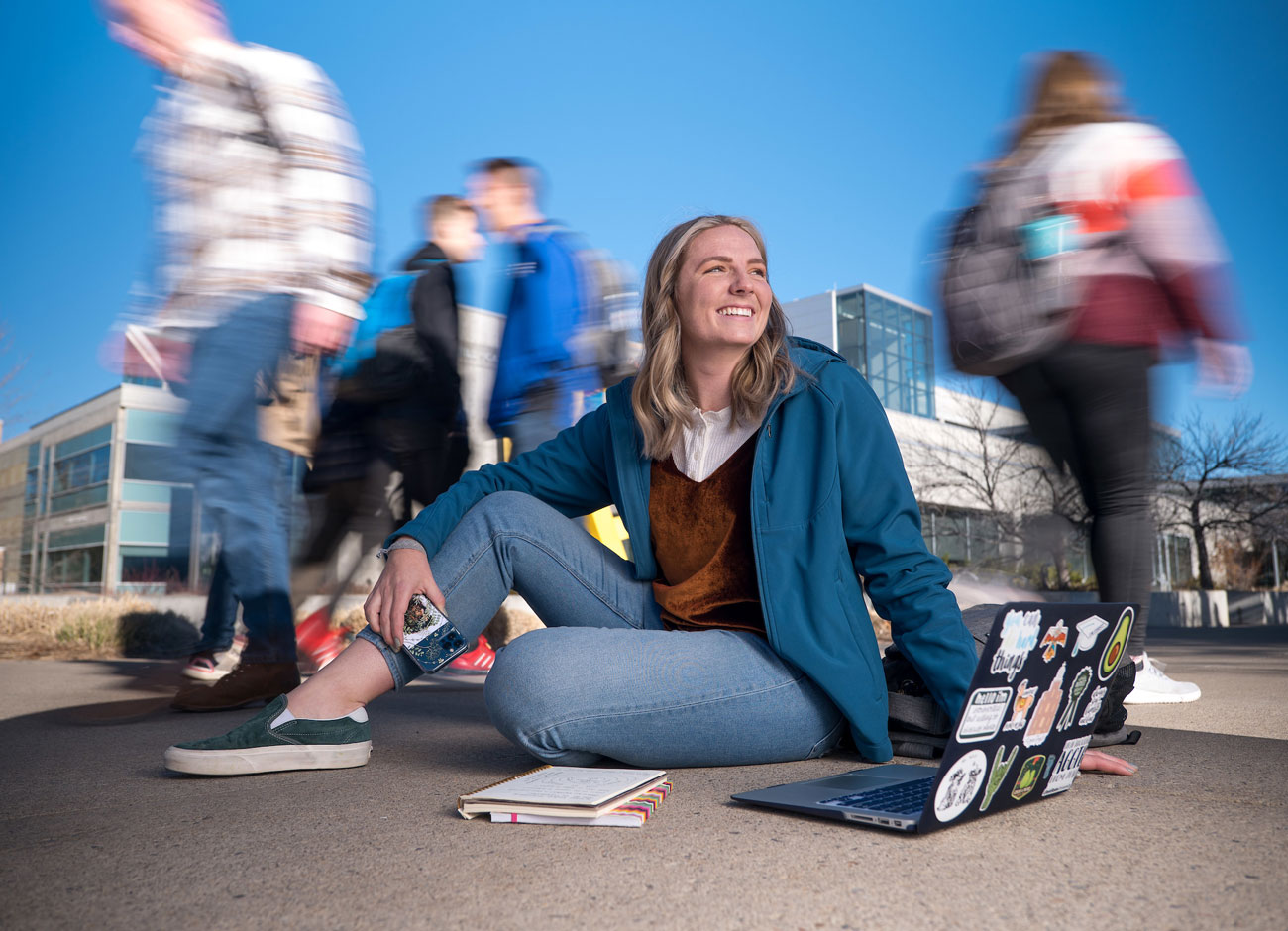
When you were in college, did you go to a football game? Live on campus in a residence hall? How about meet with an advisor?
These are some of the aggregate data points analyzed by the Center of Student Analytics at Utah State University.
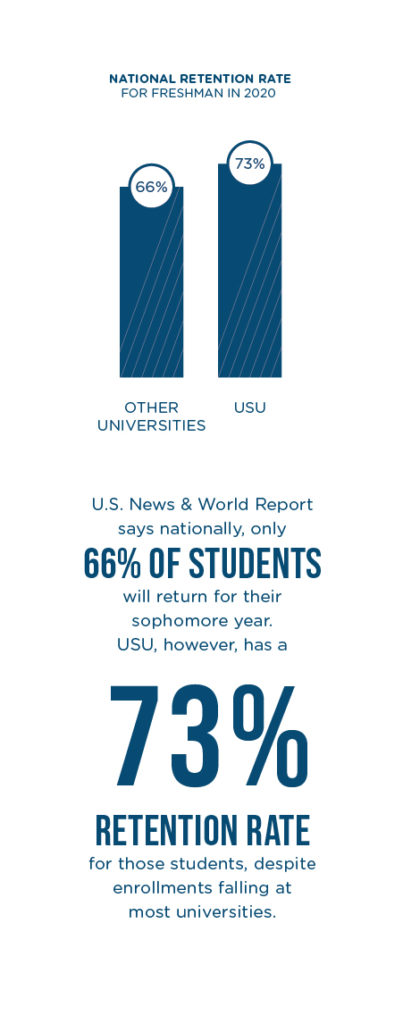
“We knew that if we wanted to get to the heart of student success, what prohibits student success and what supports it, we needed a more complete picture,” says Robert Wagner, USU’s executive vice president of USU and former vice president of Academics and Instructional Services (AIS). “Being able to consider a student’s entire experience is crucial. We want to examine the activities that can help us measure improvement with student success.”
So the Center for Student Analytics was formed in AIS to dive in and try to answer questions formed by the Student Achievement Collaborative — a multidisciplinary group of faculty and staff members working to break down barriers with data-driven initiatives. When all these data points are added up and analyzed they reveal an underlying concept that seems to be the biggest indicator of student persistence: a meaningful experience.
“The data showed early on that more engagement with faculty leads to greater persistence,” Wagner explains.
Then it was a matter of increasing engagement opportunities for students, like those that occur in Connections and the Aggie First Scholars program. Connections, or USU 1010, is a 2-credit course for incoming, first-time students to help them transition to university life in a more in-depth setting than just orientation.
“Many institutions have a first-year experience program, but ours has some really unique elements to it,” adds Jennifer Grewe, the director of Connections and an assistant professor of psychology at USU. “We have such heavy involvement from our faculty across campus, and that’s more unique. We have this whole year long mentoring experience, which is very unique.”
Similarly, the Aggie First Scholars program was designed to help first-generation college students navigate the ins and outs of higher education and connect them with peers and mentors, plus offering classes for credit.
And the efforts are working.
In her most recent State of the University address, USU President Noelle E. Cockett spoke of how each year, USU continues to increase the number of awards given out to students — from certificates through doctorate degrees — pointing to success in student retention.
Financial burdens are one of the biggest barriers students face when going to school. Finding housing that’s affordable is increasingly difficult. Health, including mental health, challenges are also on the list. Then the COVID-19 pandemic added an additional roadblock — this time for both staff and faculty as well as students.
“But while the national trend was things getting worse, we got better,” says Associate Vice Provost for General Education Harrison Kleiner, who’s also an associate professor of philosophy.
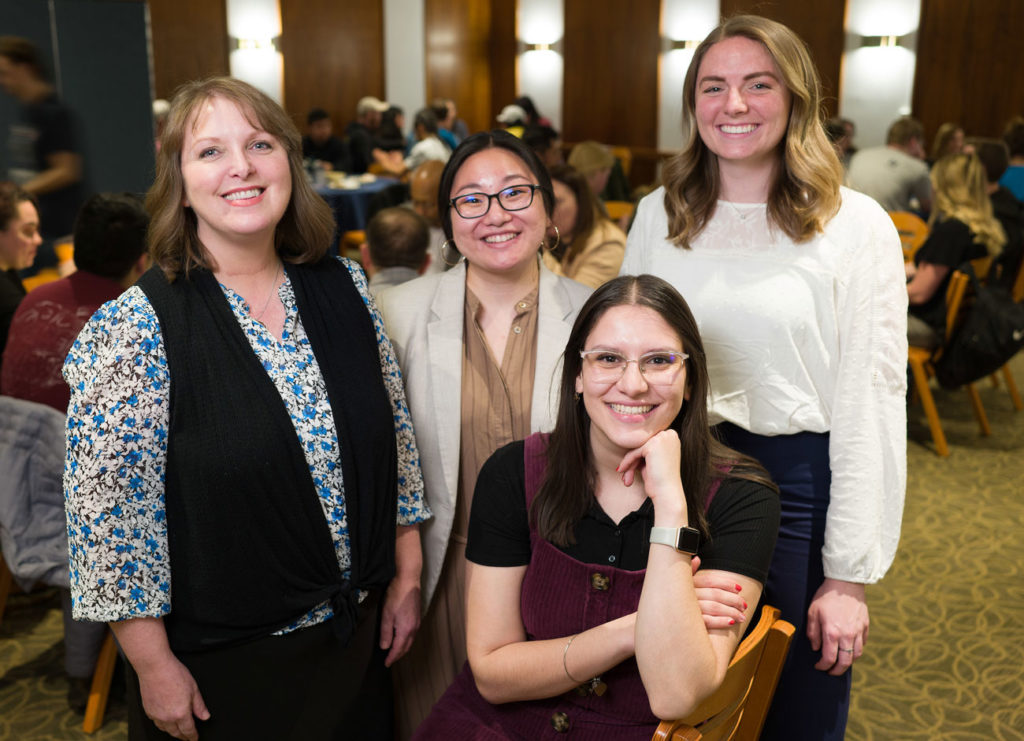
Many institutions nationwide experienced an average extra retention drop of about 10%, but USU’s overall retention didn’t drop at all.
In fact, for students who took USU 1010: Connections and participated in the Aggie First Scholars program for first-generation college students, retention improved.
And a huge part of that is USU’s focus on bringing belonging to the forefront of student experiences and having a support system to fall back on when times get hard, Grewe says. “We all want to feel like we belong, and the same thing holds true at a university and in an academic setting.”
Another aspect is making sure to reach out to students the university knows are struggling, Mykel Beorchia M.S.’13, B.S. ’07, the director of the Office of University Advising and Exploratory Advising, adds.
“We know the students who are most vulnerable and need the most support are the least likely to come see us,” she explains. “But the data shows us when those vulnerable students meet with an academic advisor, they are 11% more likely to register for the next semester.”
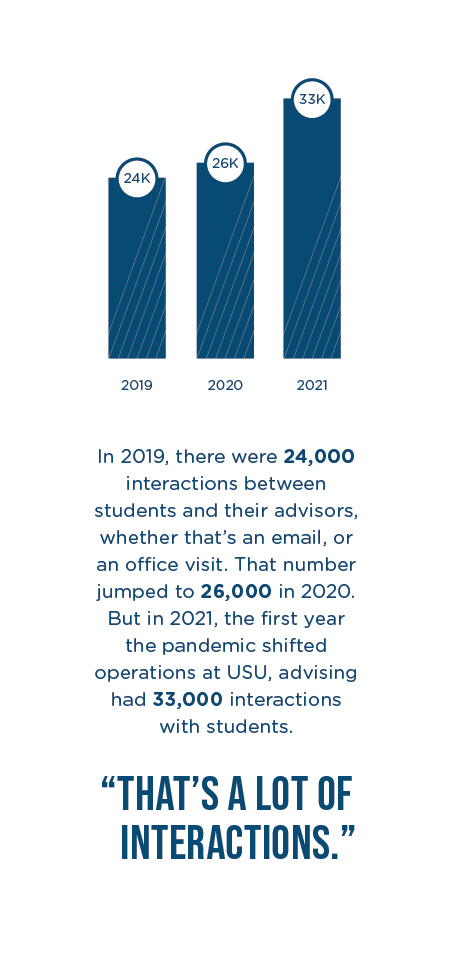
Advising is a key component in student retention and persistence.
Beorchia has made it her mission as an advisor to create a system for students to discover, dream, and design a plan to deliver on their values and goals. She understands that many people have had a bad advising experience, and that’s why it’s crucial to put relationships and trust building at the center of every advising interaction.
And this is crucial for increasing persistence as the Center for Student Analytics found students who meet with an advisor have a 90.7% persistence rate — that’s 5% higher than their peers — in 2019.
And in 2020, students who engaged in remote advising were nearly 10% more likely to persist.
“When we shifted to remote advising, we were all apprehensive about what it was going to be like, because an advising appointment is more than just an exchange of words,” Beorchia says. “You might want to give a flyer or walk a student to a different office based on their needs, so we worried about providing the same level of service in a remote environment. But we saw more students than ever before during our 2020 COVID year.”
In 2019, there were 24,000 interactions between students and their advisors, whether that’s an email, or an office visit. That number jumped to 26,000 in 2020. But in 2021, the first year the pandemic shifted operations at USU, advising had 33,000 interactions with students, says Beorchia. “That’s a lot of opportunities to impact student success.”
And for students who have a foundation of mentorship and meaningful engagements coming into the university, persistence is even higher.
Increasing connections leads to higher completion — especially for first-generation Aggies.
Connections has been a piece of orientation for new Aggies for decades. But following research on students’ quest for meaning and increasing opportunities for mentorship, the curriculum was revamped to add in a faculty mentor component in addition to highlighting meaningful engagement.
“It’s beneficial for anybody to take Connections, to see what college is like,” says Karla Sandoval Rodriguez ’23, who’s studying biological sciences composite teaching. “But it was so incredibly beneficial for me, because I didn’t know what to expect. I didn’t know what was gonna happen, I didn’t know what resources were available to me, I didn’t know anything, really. So being able to take that class and kind of prepare myself those three days before school started — I don’t know if I would have survived if I hadn’t taken that class.”
Now, Sandoval Rodriguez is a peer mentor for students in Connections.
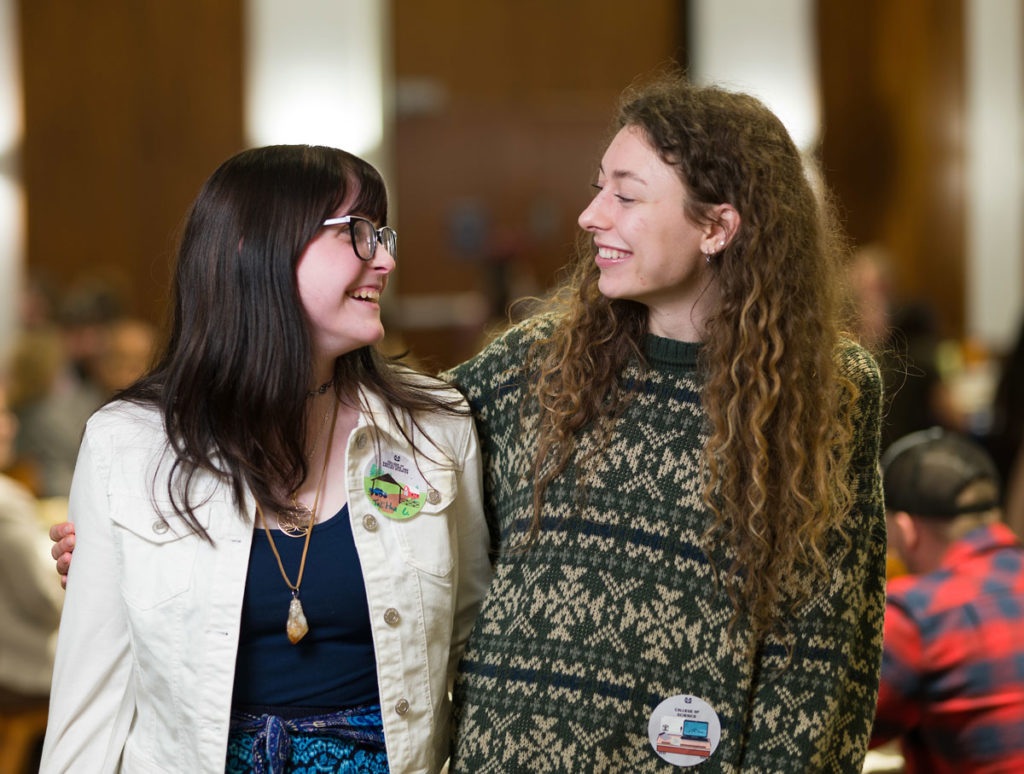
As a new student, there are lots of questions on the hidden curriculum of college, adds Heidi Kesler ’95, director of student retention and completion at USU, and especially questions about general education and the academic experience.
“Things like ‘Why do I have to meet with my advisor? Why do I have to write papers?’” she says. “It’s really that they don’t understand why, so it turns into complaints.”
Failure to address students’ complaints can lead to frustrated students getting lost in their struggles, especially first-generation college students, like Maddie Evans ’22 and Sandoval Rodriguez.
“Complaints are a plea for meaning,” says Kleiner. “When a student is complaining, it shows the university has not done a good job explaining to them what portable skills they are going to cultivate here are going to help them in the workforce, in the public sphere, and in their personal life.”
“Your average graduate today is going to change careers seven times,” he adds. “And when you talk to employers, 92% of employers in one survey said they do not care what the people they hire with a college degree majored in, but they care they have a college degree.”
This has led to another shift in teaching Connections: explaining the purpose of creating lifelong learners with skills like critical thinking, creativity, and communicating clearly as they explore their options in school and find their passions.
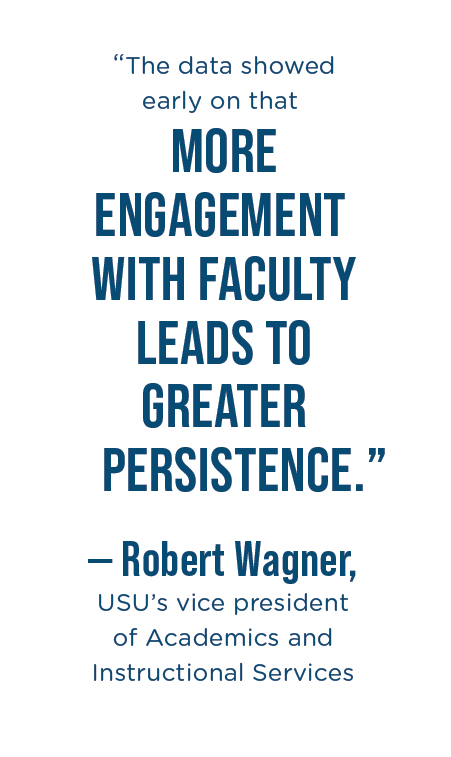
And that shift can lead to students like Evans continuing their education here rather than dropping out or transferring elsewhere when they realize things aren’t clicking.
“I love being able to work and participate in programs with students who have similar experiences to me, like being able to know it’s OK I didn’t pick my first major, and knowing there’s a support system with my academic advisors, with the Aggie First Scholars programs,” she says. “It’s knowing there’s a place where I can mess up and it’s not really a mistake, but it’s trial and error.”
“There’s a power that comes in knowing you’ve found your spot, even if you just have one foot down — maybe you don’t have both your feet stable yet, but you’ve at least got one down, and it feels good to know where you can take the next step.”
But those interacting with students have to act fast to form connections with students.
“After the spring of their freshman year to the beginning of their sophomore year, we lose between 25% to 30% of that freshman class,” says Kesler. “After that it falls to about 7%.”
And the retention gap grows for first-generation students.
In 2015, the working assumption was that students from underrepresented populations weren’t being retained mostly due to financial issues. But USU had a group of underrepresented first-generation college students with full-ride scholarships, and their retention rate was only 50%.
After a year of research and collecting data, the Aggie First Scholars program was born in 2016 to add an additional layer of support and mentorship for those at highest risk of attrition right off the bat.
“And interestingly, the students who are on the scholar path have a nearly 100% persistence rate,” Kesler adds. “So we know these things are working.”
Both Evans and Sandoval Rodriguez, who also work as student coordinators for Aggie First Scholars, say it’s empowering to participate in the program and rewarding to pay it forward.
“As I have had the opportunity and privilege to help lead that program, I get to hear students and I get to help their voices make it to ears,” Evans says. “I get to help people know that their thoughts and their feelings are shared, and that they can make a difference with the ideas that they have, that there are opportunities available for them. I hope one day they become better leaders than I ever was to them.”
By Kat Webb ’20
Photos by Levi Sim.
Illustrations by Liz Lord ’04






